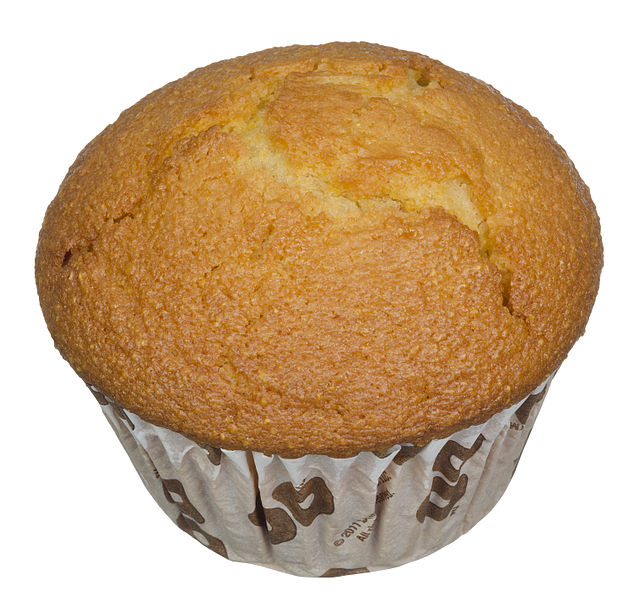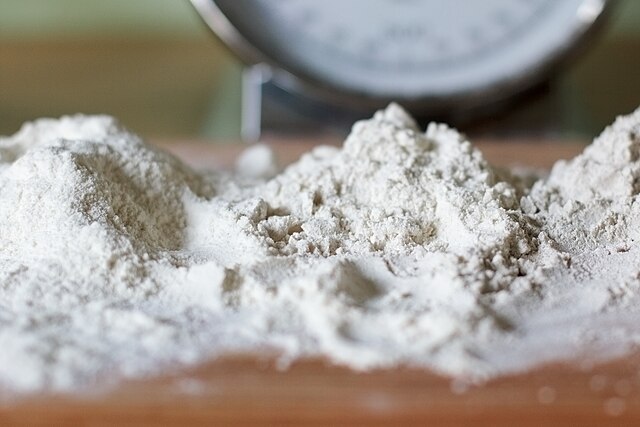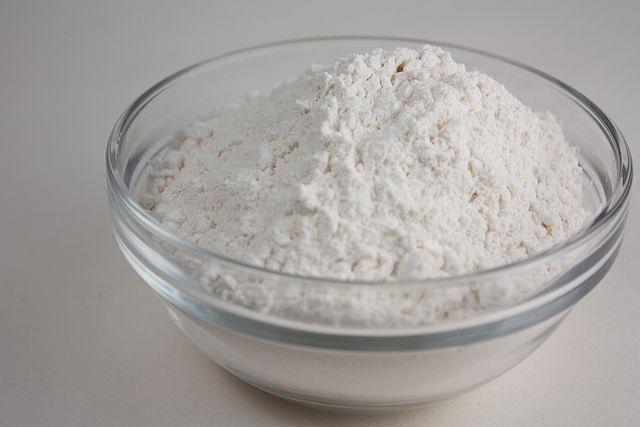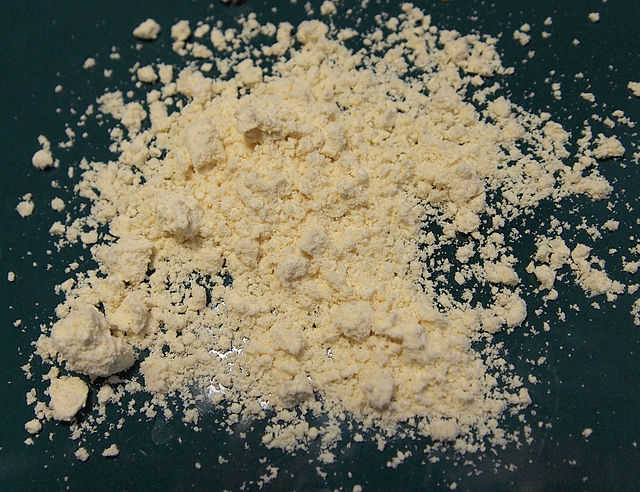Cornmeal is a meal ground from dried corn (maize). It is a common staple food and is ground to coarse, medium, and fine consistencies, but it is not as fine as wheat flour can be. In Mexico, very finely ground cornmeal is referred to as corn flour. When fine cornmeal is made from maize that has been soaked in an alkaline solution, e.g., limewater, it is called masa harina, which is used for making arepas, tamales, and tortillas. Boiled cornmeal is called polenta in Italy and is also a traditional dish and bread substitute in Romania.
Cornmeal
Southern Africa's Nshima cornmeal (top right corner), served with three relishes.
Grindstones inside Mingus Mill, in the Great Smoky Mountains of North Carolina. Corn is placed in a hopper (top right) which slowly feeds it into the grindstone (center). The grindstone grinds the corn into cornmeal, and empties it into a bucket (lower left). The grindstones are turned by the mill's water-powered turbine.
A corn muffin
Flour is a powder made by grinding raw grains, roots, beans, nuts, or seeds. Flours are used to make many different foods. Cereal flour, particularly wheat flour, is the main ingredient of bread, which is a staple food for many cultures. Corn flour has been important in Mesoamerican cuisine since ancient times and remains a staple in the Americas. Rye flour is a constituent of bread in both Central Europe and Northern Europe.
Three different kinds of wheat and rye flour. From left to right: wheat flour Type 550 (all purpose flour), wheat flour Type 1050 (first clear flour), rye flour Type 1150
All-purpose flour
Cassava flour (left) and corn flour (right) in Kinshasa, Democratic Republic of Congo. These flours are basic ingredients for the cuisine of Central Africa.
Kinako








